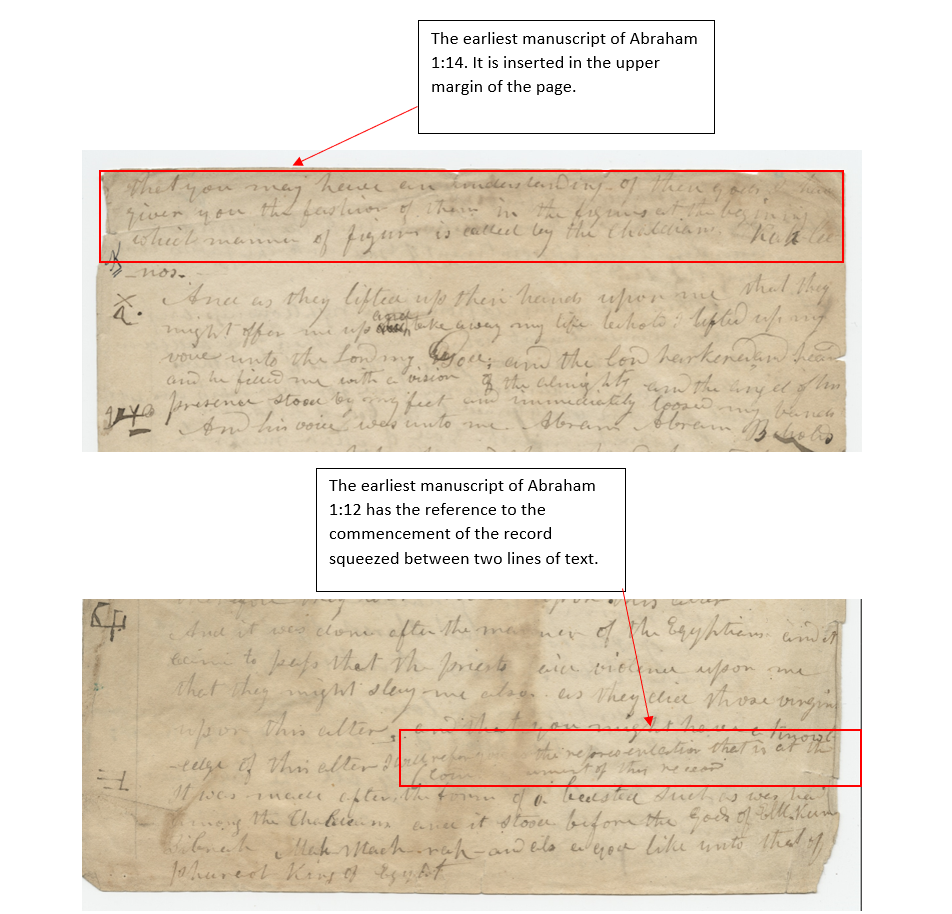
FAIR is a non-profit organization dedicated to providing well-documented answers to criticisms of the doctrine, practice, and history of The Church of Jesus Christ of Latter-day Saints.
SpencerMarsh (talk | contribs) |
SpencerMarsh (talk | contribs) |
||
| Line 9: | Line 9: | ||
Furthermore, reading the text of the Book of Abraham becomes smoother with the omission of these phrases. The translation retains coherency even without the textual insertions. These insertions were likely later additions to the text—perhaps even with the approval of Joseph Smith. | Furthermore, reading the text of the Book of Abraham becomes smoother with the omission of these phrases. The translation retains coherency even without the textual insertions. These insertions were likely later additions to the text—perhaps even with the approval of Joseph Smith. | ||
[[File:Book_of_Abraham_Manuscripts.png| | [[File:Book_of_Abraham_Manuscripts.png|2000px|thumb|center|[https://www.josephsmithpapers.org/paper-summary/book-of-abraham-manuscript-circa-july-circa-november-1835-a-abraham-14-26/1 Book of Abraham Manuscript, circa July–circa November 1835–A (Abraham 1:4–2:6)]]] | ||
</onlyinclude> | </onlyinclude> | ||
There are several criticisms that attach themselves to Abraham 1:12,14. It is postulated that they require that Abraham be familiar with the facsimiles themselves, that they complicate the missing papyrus theory, and so on.
The earliest manuscripts of Abraham 1:12 and 14 have the text squeezed either between lines of text or in the upper margin of the parchment that Frederick G. Williams scribed.
Furthermore, reading the text of the Book of Abraham becomes smoother with the omission of these phrases. The translation retains coherency even without the textual insertions. These insertions were likely later additions to the text—perhaps even with the approval of Joseph Smith.


FAIR is a non-profit organization dedicated to providing well-documented answers to criticisms of the doctrine, practice, and history of The Church of Jesus Christ of Latter-day Saints.
We are a volunteer organization. We invite you to give back.
Donate Now